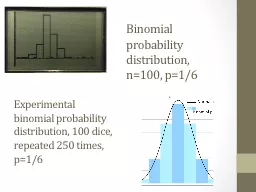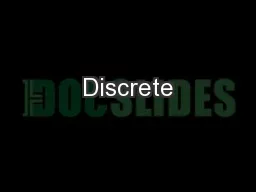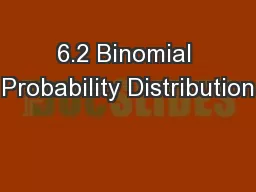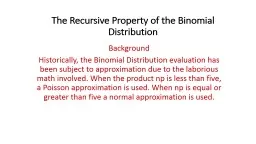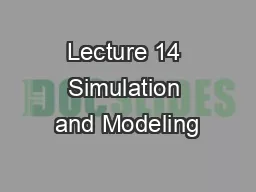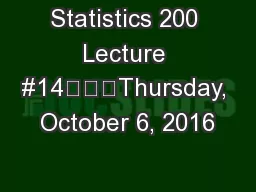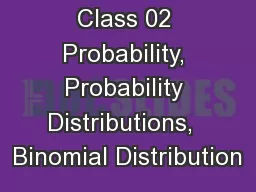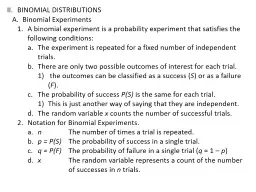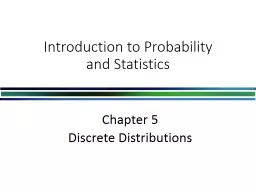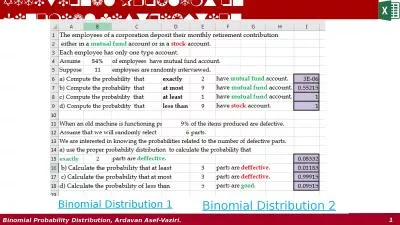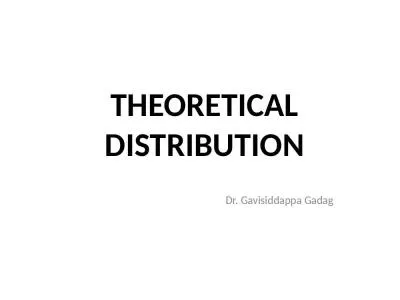PPT-Binomial probability distribution,
Author : phoebe-click | Published Date : 2016-10-20
n 100 p16 Experimental b inomial probability distribution 100 dice repeated 250 times p16 Cosine program Pythagorean triples Fermats last theorem Cuius rei demonstrationem
Presentation Embed Code
Download Presentation
Download Presentation The PPT/PDF document "Binomial probability distribution," is the property of its rightful owner. Permission is granted to download and print the materials on this website for personal, non-commercial use only, and to display it on your personal computer provided you do not modify the materials and that you retain all copyright notices contained in the materials. By downloading content from our website, you accept the terms of this agreement.
Binomial probability distribution,: Transcript
Download Rules Of Document
"Binomial probability distribution,"The content belongs to its owner. You may download and print it for personal use, without modification, and keep all copyright notices. By downloading, you agree to these terms.
Related Documents

